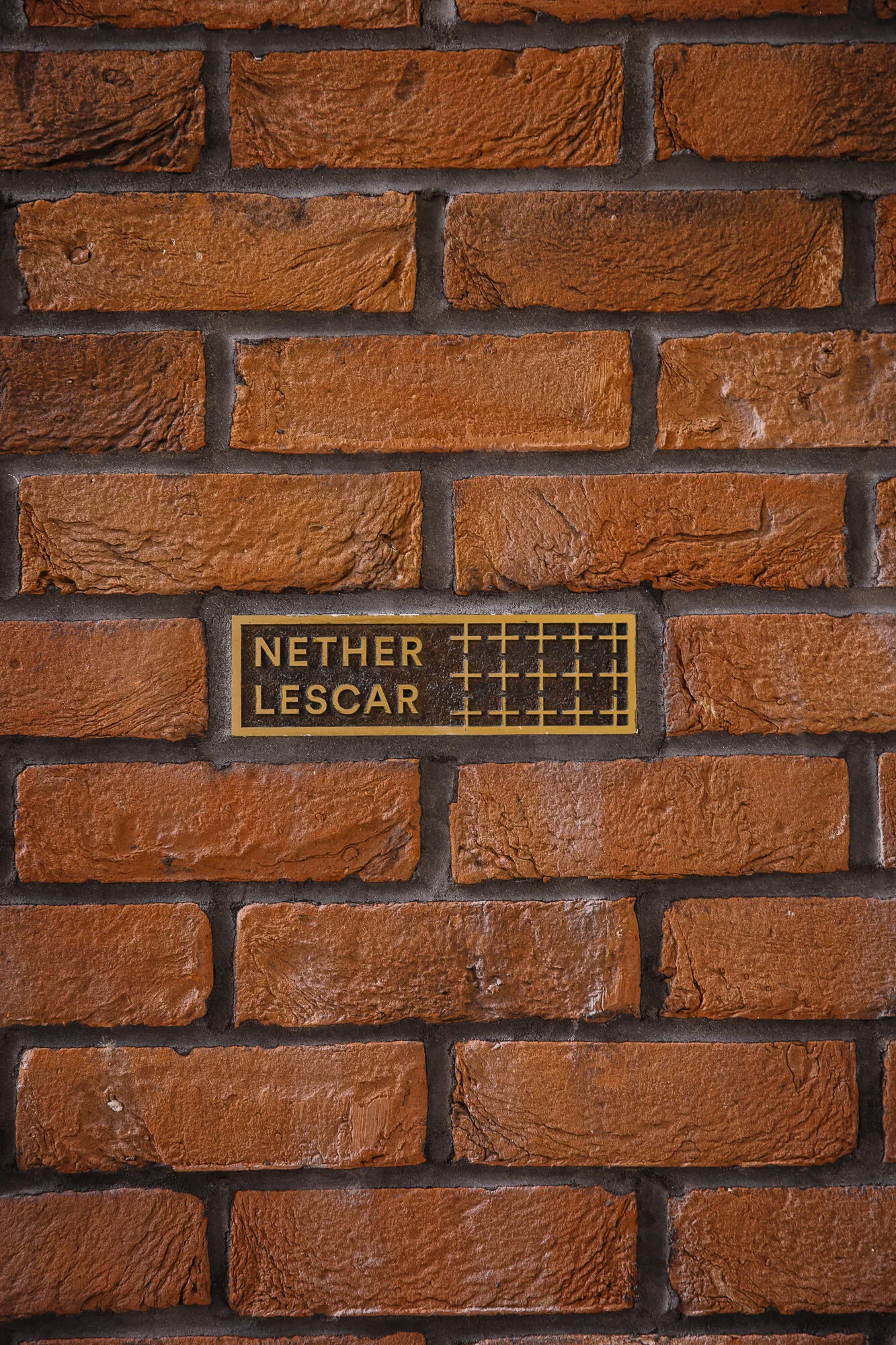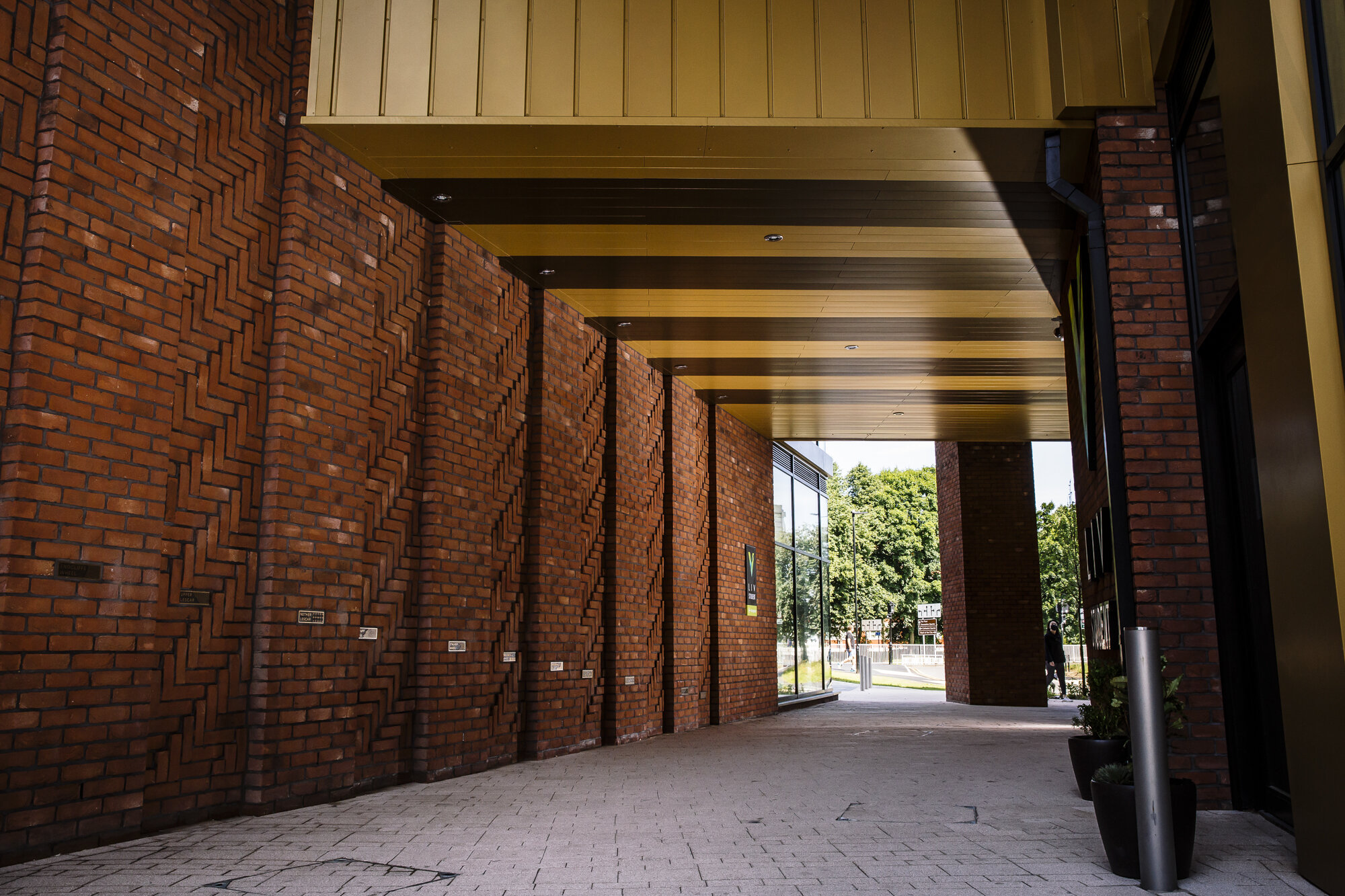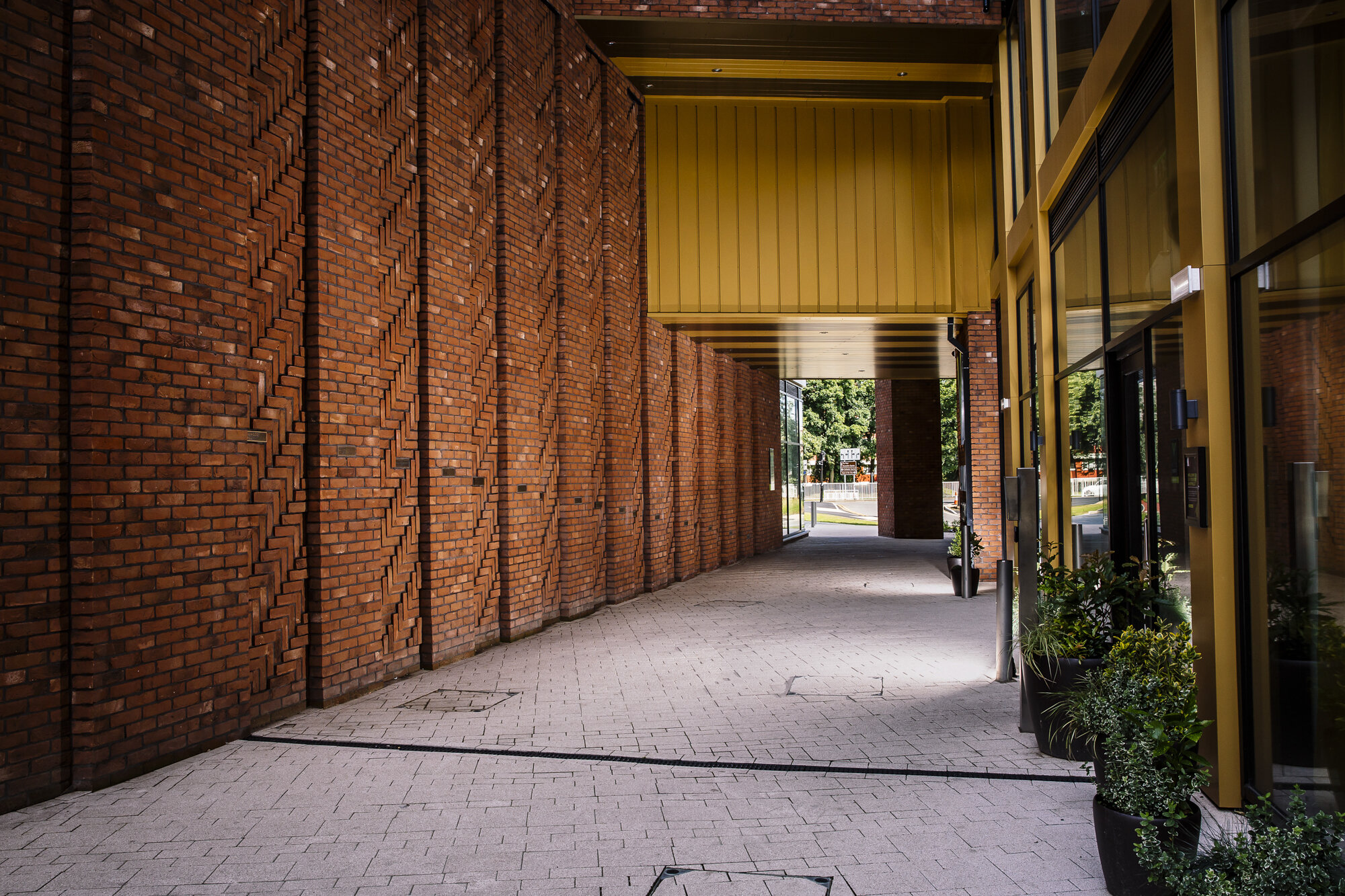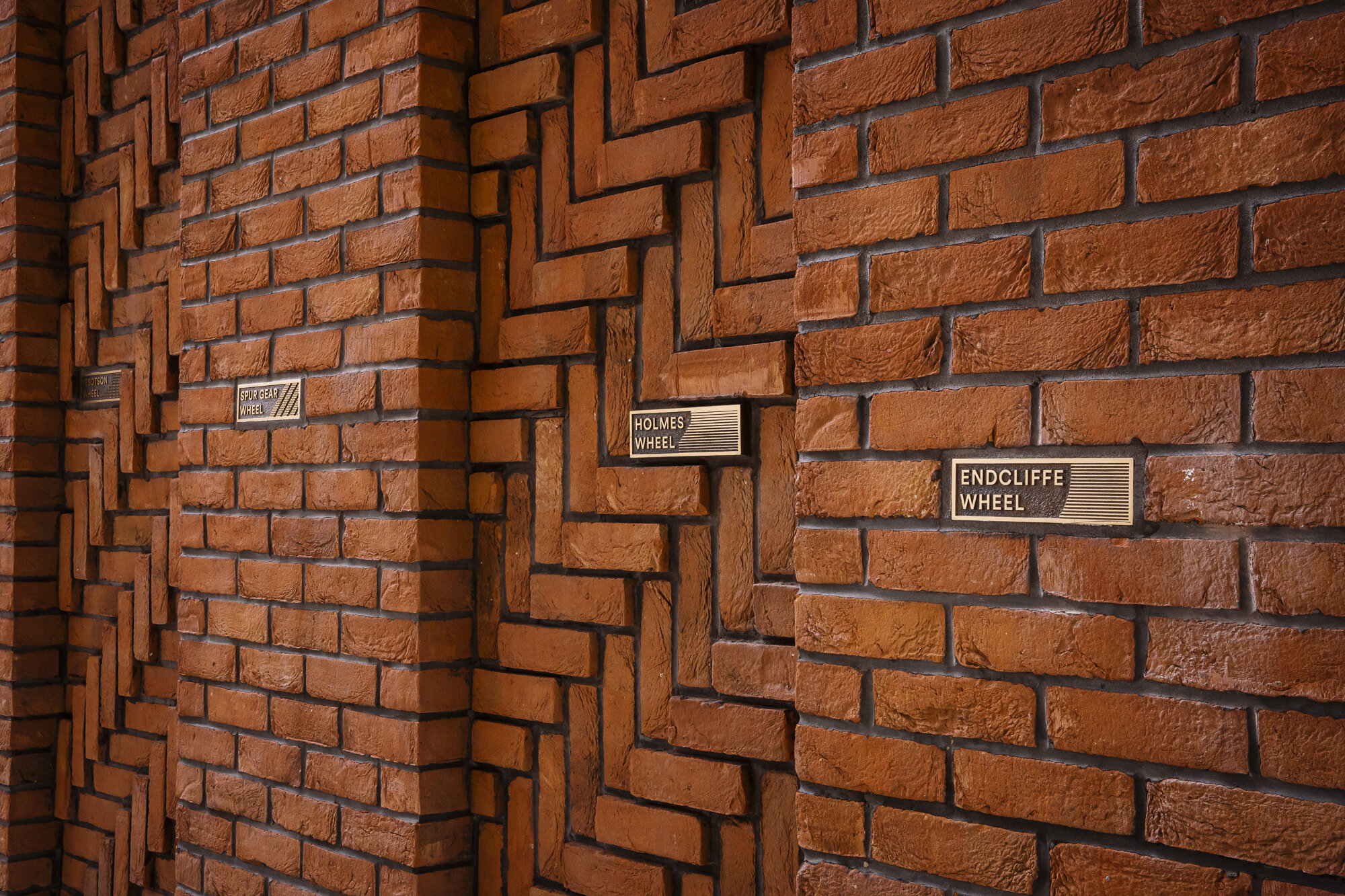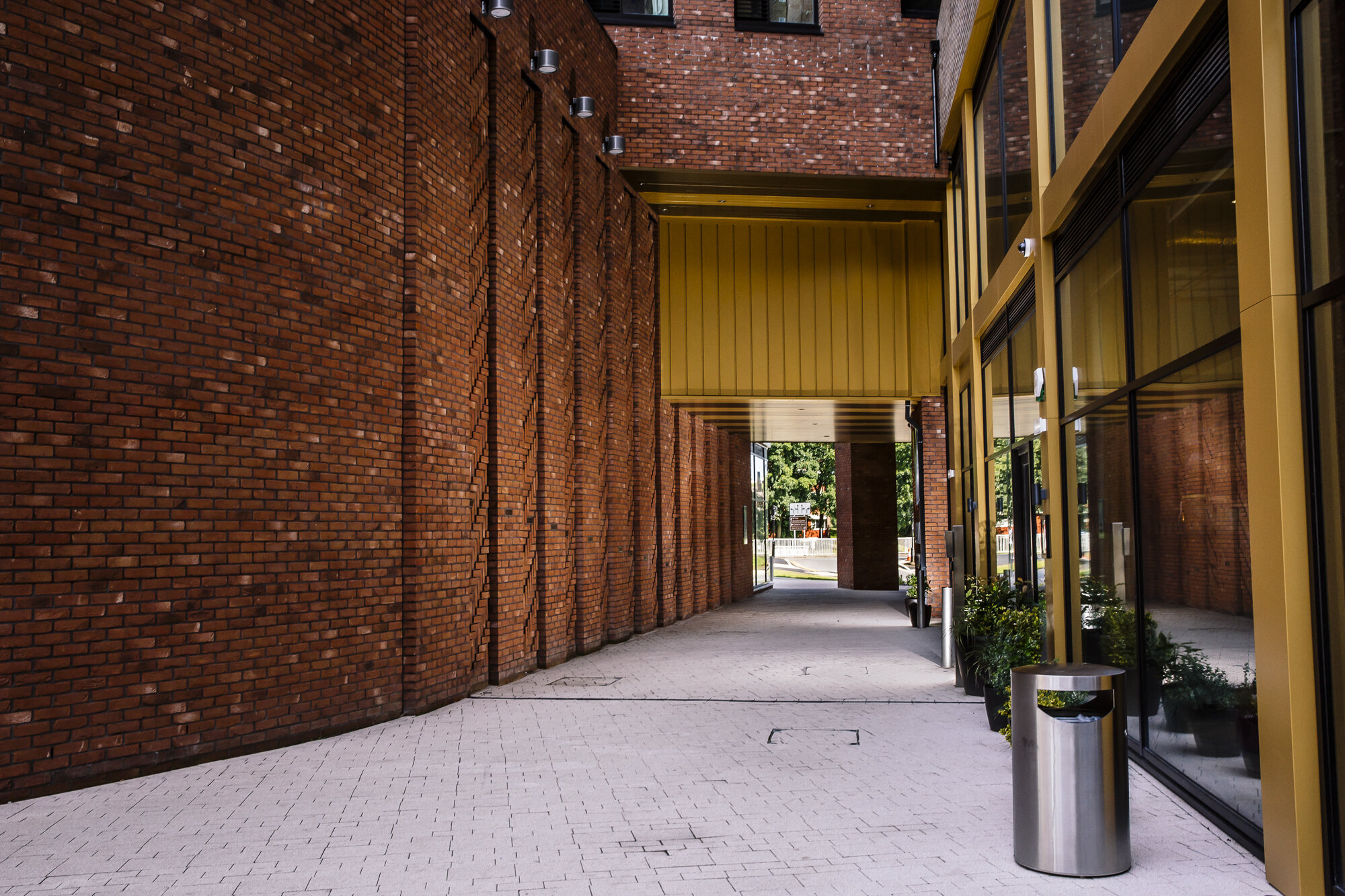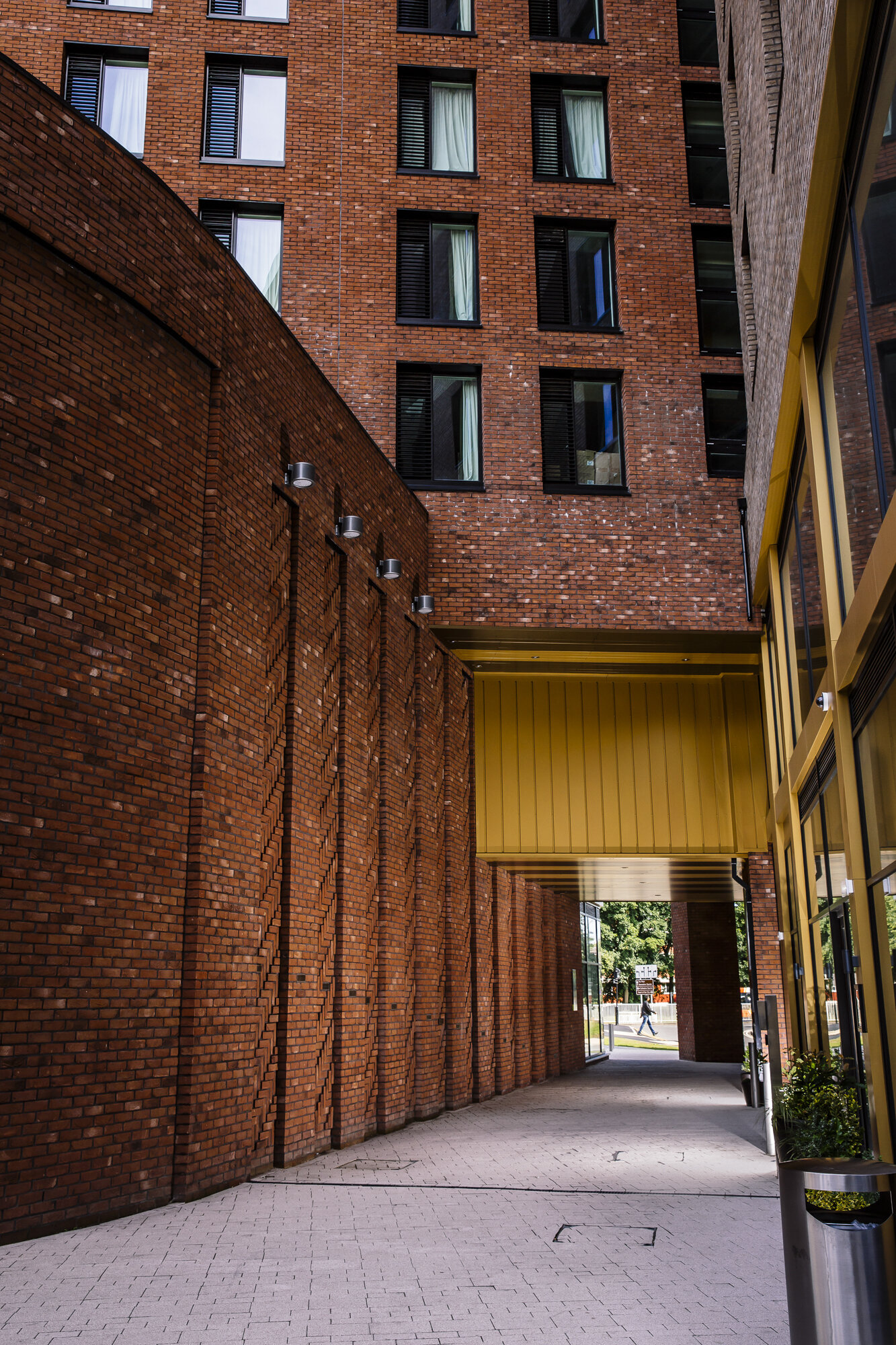Photos: James Mulkeen
Porter Brick
2020
The Porter Brook is a river in the City of Sheffield, it descends over 1,000 feet from its source among the sedge grass on Burbage moor behind a small farm on Hangram. It derives its name from its brownish colour, similar to the colour of Porter, a brownish discolouration obtained as it passes over iron-ore deposits on its course from the source.
The Porter, like other rivers in Sheffield, is ideally suited for providing water power. This enabled dams to be constructed reasonably close together, without the outflow from one mill being restricted by the next downstream dam.
By 1740 Sheffield became the most extensive user of water-power in Britain and probably in Europe. In the Porter Valley alone 21 mill dams served 19 water-wheels, mostly used for grinding corn, operating forge-hammers, and rolling mills, grinding knives and the various types of blade that made Sheffield famous.
Our design work references the site’s close proximity to the Porter Brook and works towards Sheffield City Councils master plan to create a continuous walkable riverside path from Sheffield Train Station to Hunters Bar. At the back of the development, the Porter Brook flows underground, hidden from our view. Our work acts as a reminder and celebration that the flow of water is close-by. We believe it will help to create an enjoyable journey through the undercroft leading from the Ecclesall Road façade to the student entrance of the building. Perhaps aiding the flow of people as well as serving as a reminder of the importance of the river.
Using a designated area of architecture, outlined in the brief, we animated the brickwork using corbeling techniques to give an indication of flow. In addition to the use of brick and corbeling techniques, we extended the visual features into the soffit and created unique bronze bricks, each cast with the name of a wheel or dam once found along the Porter Brook. Lighting was used to enhance the vertical pillars during hours of darkness.
The project was designed in conjunction with Axis Architecture (Sheffield).
Materials - Brick and Cast Bronze
